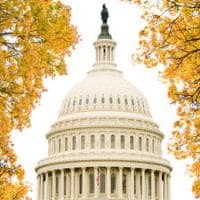Abstract
Recent economic data provide the clearest signs that the problems in the housing and financial markets are affecting the economy as a whole. In December 2007, payroll employment growth fell nearly to zero and the unemployment rate rose 0.3 percentage points to 5.0 percent. The last time the unemployment rate climbed this much in one month was in the 2001 recession. Delinquency and foreclosure rates are rising and risk spreads in financial markets remain much wider than last summer. On the other hand, there are some reassuring indicators: net exports have been trending up and consumer spending rose at a brisk pace in October and November. However, most forecasters are predicting a marked slowdown in economic growth for several quarters, and many put the odds of recession in the neighborhood of 50 percent.
Economists believe that monetary policy should play the lead role in stabilizing the economy because of the Federal Reserve’s ability to act quickly and effectively to adjust interest rates, using its technical expertise and political insulation to balance competing priorities. The Federal Reserve has already cut the federal funds rate by 1 percentage point since September 2007, and financial markets expect substantial further rate cuts this year.
Fiscal policy can also help to stabilize the economy. Countercyclical fiscal policy happens automatically to a certain extent, because tax payments fall and unemployment insurance spending rises when the economy slows. But some leading economists, including Martin Feldstein and Lawrence Summers, have argued that monetary policy and the automatic fiscal stabilizers may be insufficient in the current situation and that further fiscal stimulus may be necessary. Such stimulus could include legislated tax cuts or spending increases designed to give a quick boost to the economy by increasing aggregate demand. The President and Congressional leaders have said they are giving serious thought to possible fiscal measures.
In considering fiscal policy at this juncture, policymakers need to answer several key questions. Is fiscal stimulus needed? When should such stimulus be provided? And what would constitute effective fiscal stimulus? These questions are not merely technical. The livelihoods and living standards of many Americans are at stake. Fortunately, economic research provides clear theory and evidence for making appropriate decisions about if, when, and how to craft fiscal stimulus. This paper summarizes the evidence and provides straightforward principles and examples for formulating effective stimulus.


